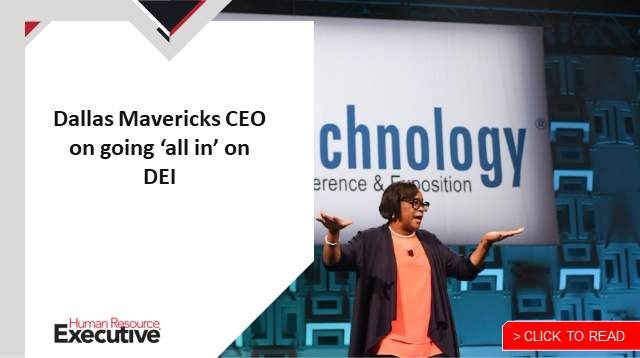Employees don’t just want recognition. Science says they need it.
Many workplace surveys consistently show that employee recognition and engagement programs help drive results, boost productivity and improve the workplace through benefits like lower absenteeism.
Behind these statistics, though, sits a deeper psychological benefit that transcends the workplace and aligns with human psychology. Believe it or not, your high school psychology class may have taught you a thing or two about how to lead an engaged team. Remember Maslow’s Hierarchy of Needs? Abraham Maslow’s theory of human motivation, published in 1943, holds that humans have five basic needs: physiological, safety, love and belonging, esteem and self-actualization.
These start from the bottom and work their way up. Your physiological needs are food, water and sleep. Once you have achieved that, you want safety. Then you want love and a sense of community. Next comes esteem, both how you feel about yourself and your accomplishments, but also how others around you perceive and honor you. Finally, you have self-actualization, the ability to realize your personal potential.
 All of Maslow’s needs directly affect employees. Companies satisfy the basic physiological need of humans by providing a paycheck that ensures they have money to afford a place to live with food on the table. The need for safety comes in the form of job security or stable contracts. Love and belonging are achieved by creating and fostering a strong workplace culture.
All of Maslow’s needs directly affect employees. Companies satisfy the basic physiological need of humans by providing a paycheck that ensures they have money to afford a place to live with food on the table. The need for safety comes in the form of job security or stable contracts. Love and belonging are achieved by creating and fostering a strong workplace culture.
When it comes to esteem, employees can get it from their own sense of accomplishment from a job well done or from the praise of their colleagues and bosses.
Most importantly, self-actualization comes when employees are their best professional and personal selves. This benefits everyone in an organization since these employees are likely the most innovative, motivated and hard-working. This is why smart business leaders know that filling the needs throughout the hierarchy leads to creating the best teams.
So why is this important to know as a business leader? There is one cultural priority that actually feeds each of the five human needs: recognition.
Our needs are fueled by recognition, and business leaders can apply positive employee recognition to each of the five. Here’s how:
Physiological. The act of hiring is one of the most life-changing gifts a business can give. As a business manager, offering someone a job ensures they have the opportunity to provide for their basic needs through regular payment. A simple “Welcome to the Team” note can be a meaningful first step in an employee recognition program. You are telling workers that their qualities and qualifications have value to you and your team, and, as a leader, you are showing them that you have personally selected them and are trusting them.
Safety. Nothing is guaranteed in life or in the workplace, but you can create a culture that gives employees a sense of stability by conducting regular check-ins and ensuring that you are managing in a way that prevents high employee turnover. That means not firing impulsively, always listening, and soliciting feedback. But it can also include an occasional “Good Morning” or “Welcome Back” note too. These simple acts of employee recognition help keep employees engaged so they don’t either engage in quiet quitting or simply walk away from their jobs.
 Belonging. Once employees feel secure individually, there is a need for them to feel successful collectively. This is where team-building comes in. A lot of company recognition programs are focused on specific employees. But it’s also important to recognize teams or your entire employee base, to create a better esprit de corps and a sense of belonging. Not only do employees feel safe and secure in their company, but they also feel comfortable being part of a team where they contribute—and where those contributions are recognized.
Belonging. Once employees feel secure individually, there is a need for them to feel successful collectively. This is where team-building comes in. A lot of company recognition programs are focused on specific employees. But it’s also important to recognize teams or your entire employee base, to create a better esprit de corps and a sense of belonging. Not only do employees feel safe and secure in their company, but they also feel comfortable being part of a team where they contribute—and where those contributions are recognized.
Esteem. Here is where employee recognition can really shine. Everyone loves praise, and business leaders are in a great position to use employee recognition programs to foster the human need for esteem. Maslow believed that self-esteem comes from an internal sense of a job well done. Yet, he also believed we are motivated by others around us noticing our value and pointing it out to us. Recognition doesn’t have to be a grand, time-consuming, gesture. I started CardSnacks because I believed that simple acts, like sending a quick, personalized note of gratitude, or recognition of an important milestone, like a birthday, an anniversary, or a promotion, could go a long way. Companies that make simple and frequent acts of recognition help feed the esteem of their employees, which makes them more motivated and engaged.
 Self-Actualization. Once all other needs are met, humans strive to be their best selves. “A musician must make music, an artist must paint, a poet must write, if he is to be ultimately at peace with himself,” Maslow wrote. “What a man can be, he must be.” Clearly, a lot of this need is filled from within, from the surety that all other needs are met and the confidence that anyone can achieve what they want. Even here though, recognition can play a role. Adapting a recognition program that has special tiers or rewards for top performers feeds the impulse for people to achieve more.
Self-Actualization. Once all other needs are met, humans strive to be their best selves. “A musician must make music, an artist must paint, a poet must write, if he is to be ultimately at peace with himself,” Maslow wrote. “What a man can be, he must be.” Clearly, a lot of this need is filled from within, from the surety that all other needs are met and the confidence that anyone can achieve what they want. Even here though, recognition can play a role. Adapting a recognition program that has special tiers or rewards for top performers feeds the impulse for people to achieve more.
Humans are complex. Any leader who has ever managed a team knows that. The good news is that creating a culture of gratitude and programs around employee recognition can provide a simple solution to ensure that you are meeting the human needs of your team while also helping them become the best employees they can be.
The post Why science says employee recognition is vital appeared first on HR Executive.